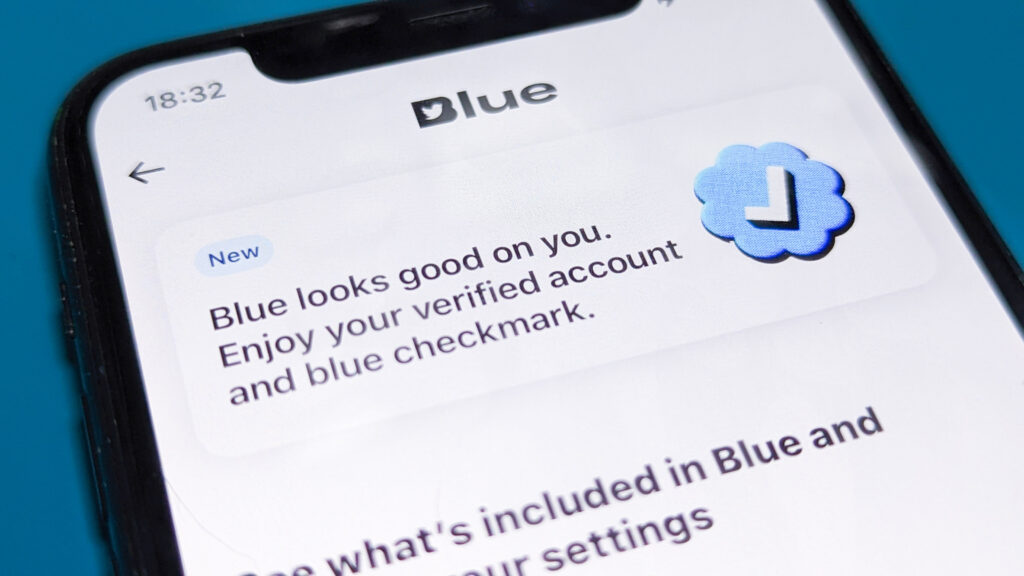Increasing concern around the use of fake or stolen login credentials and their impact on personal and professional identity has been a growing concern for cyber security. Cyber criminals often create malicious trolls, creating fake profiles (or taking over verified accounts) to conduct scams, frauds, and other dishonest schemes.
Twitter verified accounts, or blue verified accounts, are a form of identity verification that allows high-profile users (i.e., celebrities and companies) to gain credibility in viewers’ eyes. The account will have a blue checkmark icon on the profile and is verified directly by Twitter itself; as such, this gives potential victims inherent trust and belief in the integrity of these accounts.
By having a verified account, the user gains credibility among potential victims and is more likely to believe their claims. What are the increasing cybersecurity risks of fake verified accounts (Twitter blue)? The following are some of the increasing cyber security risks associated with fake verified accounts:
Phishing Scams
Phishing scams are a common form of cyber crime whereby scammers create fake websites, pretend to be trustworthy websites, and try to persuade the user into entering personal information such as passwords and credit card details. These sites may look legitimate but are made by cyber criminals who will use his information for malicious purposes. By creating fake verified accounts that have access to numerous blue checkmarks, scammers can improve the view of their illegitimate sites in the eyes of unsuspecting users. This can provide a positive first impression of the malicious site, making it appear more trustworthy.
Fraudulent Behaviour
Scammers can use fake verified accounts to spread fictitious and malicious content. This could include links to scams or counterfeit products, which will be convincing once the fake account’s followers disseminate the link in their comment streams. The fake account could also post as an influencer, creating a false sense of authority among its followers that exists solely on the user’s profile page. This can trick users into believing that the influencer has high standards and is a worthy authority to seek financial or social advice.
Denial of Service Attacks
Denial of Service attacks, or DDoS attacks, are methods cyber criminals use to prevent individuals from accessing a particular online service or website. These can have devastating consequences for the service and its users, as the attackers will create many fake accounts that will send traffic to the target web page. This can overload the web page with requests, causing it to collapse under its weight. This can prevent users from accessing the site or service and will waste resources and time on both ends of the spectrum.
Data Breaches
Data breaches are a serious issue exposed in recent years and have had severe consequences for both larger organisations and private individuals. These occur when cyber criminals can steal personal information from an organisation’s database for financial gain or use against the victim (i.e., social engineering). The data can include passwords, credit card numbers, and other sensitive personal information. By creating fake verified accounts, cyber criminals can access many real user data and use it for malicious purposes, including verifying the data source for nefarious reasons.
Malicious Advertisements
Malicious advertisements are the leading form of cyber crime and can create severe consequences for those it targets. These are online advertisements created to spread malicious software or malware. Once clicked, the advertisement will start downloading harmful software that can infect the user’s system. Using fake verified accounts, cyber criminals can trick users into clicking on malicious ads that lead to malicious servers where they intend to steal credentials and personal information. This can lead to severe identity theft and financial damage, which will be difficult to recover.
CEO Fraud
CEO fraud is the practice of cyber criminals impersonating a company’s CEO to commit financial crimes. The fraudsters will contact company employees or others and trick them into transferring money or divulging confidential information. Using fake verified accounts, cyber criminals can trick employees and other users, as they will appear legitimate to those who believe they are talking to their CEO. This can lead to a severe data breach that may harm the company’s reputation and cause others to lose faith in it.
To conclude, fake verified accounts (Twitter blue) are a growing concern for cyber security. These accounts have access to privileged information and can be used for financial gain, identity theft, and fraud. Cyber criminals will use this data to commit fraud or other crimes, which can have devastating consequences for the end victim and expose them to other forms of cyber crime.

